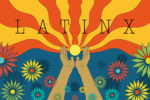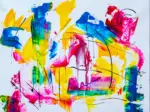Murals are for the people. They remove exclusivity from art by bringing people together while also adding beauty to the days of their passersby.
The word “mural” originates from the Latin word “murus,” which means wall, but today mural can be defined as any piece of art painted onto a “wall, ceiling or other larger permanent surfaces, flat, concave or convex.” This means that murals are truly meant to be appreciated by everyone and on as large a scale as possible.
As Mural Form explained, “Murals can be used as landscapes, especially because they are vast and hard to miss paintings. Every painting is unique, and it’s hard to mistake one for the other. Murals are a way of expression for the muralists. It is their way of speaking to people and the world. They command the attention of the people and leave their mark in the area for centuries to come … Mural painting has been in constant evolution over the years, and it continues to evolve to incorporate the use of modern materials and pictures.”
From Diego Rivera to Keith Haring to Banksy, murals as an art form have evolved drastically since their inception as cave paintings 30,000 years ago. Today, digital mural techniques such as wall scapes are becoming increasingly popular, a case of even the most rudimentary form of art entering the era of technology. This being said, there are still many mural artists who stick to traditional wall painting — and Spanish artist David de la Mano is a prime example.
A graduate in fine art from the University of Salamanca who conducted Ph.D. studies in public art at the University of Valencia, Spain, de la Mano started his career in the early ‘90s creating land art projects. Since 2008, the artist has focused his attention on mural paintings. I talked to de la Mano by email this past week, as he finished up a project for the Catholic University in Montevideo — here are his insightful responses.
How did you become a muralist and when did you know you wanted to be an artist?
“The beginnings are a bit fuzzy in time. I never believed that I was going to dedicate myself to making art or murals, it was simply something that was happening on its own. After studying at the university, I had worked on illustrating, painting and making sculptures, finally I opted for murals since it is what I discovered that interests me the most[.]”
What inspires your monochrome art style?
“At first it was the speed and ease of conveying clear and simple messages, then I got caught up in that language. Just a couple of years ago I was able to open myself to other chromatic possibilities.”
What is your favorite project that you have done and what is one project that you have always wanted to do?
“Normally, the one I like the most is usually the last one I’ve done. It sounds typical but that’s the way it is. In this case, it has been a large-format mural, the commission has been from the Catholic University in Montevideo and it is an enveloping project with several complete floors in which the various constellations are represented through visual metaphors.”
How do you get contracted to do your murals?
“I believe that [it’s] a small world. The most of us meet in person or by our work. It’s very easy, the relations, and very fast communication. By luck the projects are better now and we could work with curators sometimes or (directly with) neighborhoods. Social media [is] important too to meet the work of the mural artist of course.”
What is your process behind creating a mural?
“Projects are prepared in advance, some from one year to the next, but most a month or a few weeks before. The process is complex, one needs to know about the place, about the neighborhood, customs, etc. Once all the information has been collected, ideas and sketches are generated and finally it is presented through photomontages and discussed with the neighbors, curators or those who make the order.”
What do you enjoy about murals and street art versus art galleries?
“They are very different things. The street is ‘freshness’, adrenaline, respect, play, etc. The interior is reflection, experimentation, discussion, detail, etc. The two are compatible and, in my case, necessary. I always enjoy it a lot and I feel fulfilled.”
De la Mano’s responses make one thing abundantly clear: Mural artists deserve a massive amount of respect. The narrative on “street art” has often been associated with words like unprofessional, trashy and lowbrow, but these descriptors couldn’t be farther from the truth. Not only are muralists expected to create giant pieces of art, but they are also given an extremely short turnaround time to do so.
When it comes to the artistic creative process, rushing is one of the easiest ways to make a subpar piece of art. That’s why the consistency of de la Mano and other mural artists’ work is so incredible. They truly challenge their capabilities with each project, fighting the limitations of time and space to create something beautiful.
















